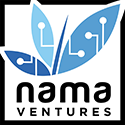In the exciting world of startups, it’s crucial to understand the potential your venture holds in the market. A critical tool to gauge this potential is Total Addressable Market (TAM). This article will provide an overview of TAM, its importance to startups, and how to calculate it.
What is Total Addressable Market (TAM)?
Total Addressable Market, or TAM, refers to the maximum revenue opportunity for a product or service within a specific market. In other words, it’s the total amount of money a startup can generate if it were able to capture 100% of its target market segment.
Understanding TAM is essential for startups because it helps them to:
-Validate their business idea and determine if it’s worth pursuing.
-Set realistic goals and benchmarks for growth.
-Make strategic decisions on product development, marketing, and sales.
-Attract investors by demonstrating a significant market opportunity.
How to Calculate TAM
There are three primary methods for calculating Total Addressable Market:
- Top-Down Approach
The top-down approach involves using industry research and data from authoritative sources to estimate the market size. This process typically involves the following steps:
Identify the industry or sector your startup operates in.
Research market data, reports, and statistics from reliable sources, such as government agencies, industry associations, and market research firms.
Use the data to determine the total revenue or sales for your specific market segment.
Apply a percentage or a multiple to account for the share your startup could potentially capture.
Example: If you’re launching a ride-hailing app in a market with a total revenue of $10 billion, and you expect to capture 1% of the market, your TAM would be $100 million ($10 billion * 1%).
- Bottom-Up Approach
The bottom-up approach involves estimating TAM by calculating the total number of potential customers and the average revenue per user (ARPU). This method is more grounded in reality, as it relies on specific data points related to your startup. The steps include:
Identify your target customer segments and their unique needs.
Estimate the total number of potential customers within each segment.
Calculate the average revenue per user (ARPU) for each customer segment based on your product pricing and expected usage.
Multiply the number of potential customers by the ARPU to find the TAM for each segment.
Add up the TAM for all segments to get the overall TAM for your startup.
Example: If you have 100,000 potential customers with an ARPU of $1,000, your TAM would be $100 million (100,000 * $1,000).
- Value Theory Approach
The value theory approach calculates TAM by estimating the total value your product or service can create for customers. This method focuses on the customer’s perspective and the value they derive from your offering. The steps are as follows:
Analyze the problems your product or service solves for customers and quantify the value created.
Estimate the number of customers who would benefit from your solution.
Calculate the total value created by multiplying the value per customer by the number of potential customers.
Apply a percentage or a multiple to account for the share your startup could potentially capture.
Example: If your product creates $5,000 in value for each customer and there are 50,000 potential customers, the total value created would be $250 million ($5,000 * 50,000). If you expect to capture 20% of this value, your TAM would be $50 million ($250 million * 20%).
In Conclusion,
Understanding your startup’s TAM is essential for making informed decisions and setting goals for growth. By using one of the methods outlined above, you can identify the potential market opportunity and ensure your venture is on the right track to success.
Always remember that calculating TAM is an estimation, and it’s essential to revisit and update your TAM calculations as your business evolves and market conditions change. With a solid grasp of your TAM, you’ll be better equipped to navigate the competitive landscape and propel your startup to new heights.



